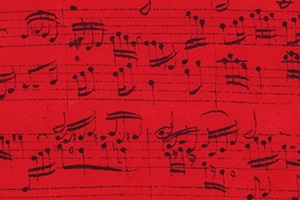TRADITIONAL
Majestic heart of the ancient Gamelan orchestra

Gamelan Gong by Musictales.club
Gamelan is the term used for a traditional musical ensemble in Indonesia, typically refering to a percussion orchestra composed predominantly of tuned gongs of various types and metal-keyed instruments.
The word comes from low Javanese meaning 'to hammer,' since the ensemble is conducted by a drummer, although it often includes voice, bamboo flute, xylophone, and stringed instruments.
Gamelan music has religious roots and plays an important part in sustaining tradition. It is performed at celebrations and often used to accompany shadow puppet plays, poetry, and drama.
The gamelan predates the Hindu-Buddhist culture that dominated Indonesia in its earliest records and thus represents an indigenous art form. The instruments developed into their current form during the Majapahit Empire during the 14th century.
An orchestra may be tuned to the scale of slendro (in which the octave is divided into five tones roughly equidistant) or to pelog (a scale consisting of seven notes of varying intervals of which five are given principal stress).
The pieces in gamelan repertoire are not normally written down but passed on through oral tradition while players learn by mastering techniques and memorizing the music.
Watch The Balinese Gamelan perform the Ngaben Ritual at Kedonganan Bali island:
No two gamelans are tuned precisely alike; rather, each instrument is tuned to match the ensemble for which it is intended instead of some external pitch standard.
Colin McPhee, a Canadian composer who spent much time in Bali, remarked:
"Deviations in what is considered the same scale are so large that one might with reason state that there are as many scales as there are gamelans."
The gamelan instruments are built in pairs that are tuned slightly apart to produce interference beats. One instrument is tuned slightly higher and thought of as the inhale, while the other, slightly lower, is called the exhale. When the inhale and the exhale are combined, the beat is produced, meant to represent the beating of the heart or the symbol of being alive.



